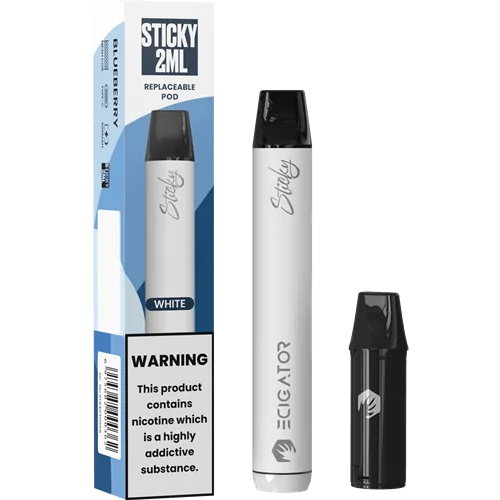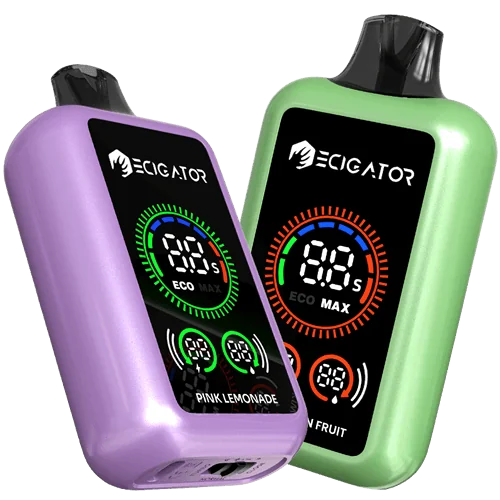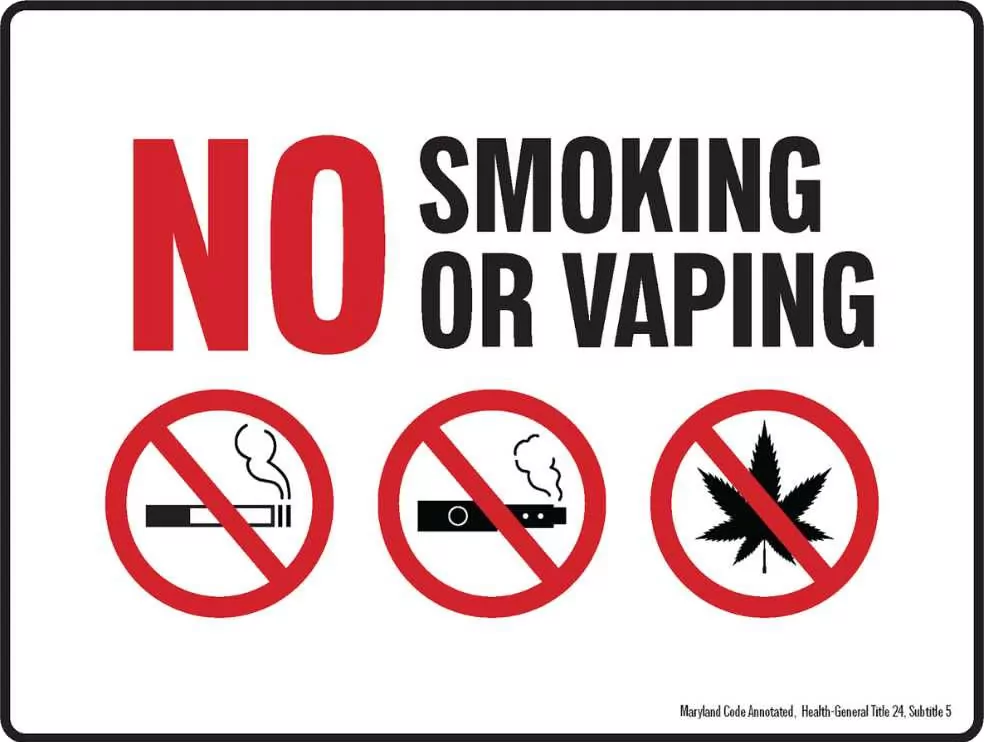Vaping in Public: A State-by-State Guide to Indoor Laws (2025)
Electronic cigarettes, commonly known as e-cigarettes or vapes, have surged in popularity over the last two decades, presenting a modern alternative to traditional tobacco smoking. This rapid increase has prompted health agencies and lawmakers nationwide to establish a framework of regulations to govern their use. A primary area of focus has been public consumption, leading to the expansion of “Clean Indoor Air” laws to include vaping. For both consumers and public-facing businesses, understanding the current rules on where vaping is and isn’t allowed is crucial.
This guide provides a comprehensive overview of the state-by-state laws regarding vaping in public indoor spaces as of 2025, helping you navigate this complex and evolving legal landscape.
The Regulatory Foundation: Why Vaping is Often Treated Like Smoking
The core question for many is why vaping, which produces an aerosol rather than smoke from combustion, is often subject to the same restrictions as traditional cigarettes. The rationale stems from several public health and regulatory principles. On August 8, 2016, the U.S. Food and Drug Administration (FDA) finalized a rule extending its regulatory authority to all tobacco products, including e-cigarettes. By classifying vapes as “tobacco products” (as the nicotine is typically derived from tobacco), the FDA established a basis for federal oversight, including the nationwide “Tobacco 21” law, which sets the minimum purchase age at 21.
At the state level, this classification has often served as a justification for including e-cigarettes in existing smoke-free legislation. The primary reasons for these restrictions include:
- Protecting the Public from Secondhand Aerosol: While vape aerosol is generally considered less harmful than secondhand cigarette smoke, it is not merely harmless water vapor. It can contain nicotine, fine particulate matter, volatile organic compounds, and other chemicals. Public health officials aim to protect non-users, particularly vulnerable populations like children, pregnant women, and individuals with respiratory conditions, from involuntary exposure.
- Preventing the “Renormalization” of Smoking Behavior: A key public health achievement has been the denormalization of smoking in public spaces. Allowing visible vaping in these same areas, which mimics the physical act of smoking, raises concerns that it could undermine decades of anti-smoking efforts and make smoking-like behaviors seem socially acceptable again, especially to young people.
- Ensuring a Uniform and Enforceable Policy: For business owners and law enforcement, it can be difficult to distinguish between cigarette smoke and dense vape clouds from a distance. Having a single, clear “no smoking, no vaping” policy simplifies enforcement and avoids confusion and confrontation.
Federal vs. State Law: A Patchwork of Regulations
While the FDA regulates the manufacturing, marketing, and sale of e-cigarettes at the federal level, it does not have a nationwide law banning vaping in public places. This authority is left to individual states, territories, and municipalities. As a result, the rules can vary significantly from one location to another. Some states have enacted comprehensive laws that treat vaping identically to smoking in all public indoor areas, while others have more limited restrictions or no statewide prohibitions at all, leaving the decision to local governments or individual property owners. This creates a complex “patchwork” of regulations that requires careful attention.
Disclaimer: This guide provides a comprehensive overview of statewide laws regarding indoor public vaping as of mid-2025. However, laws are subject to change, and local city or county ordinances are often stricter than state law. This information is for informational purposes only and does not constitute legal advice. Always check local regulations and obey posted signage.

Ecigator Sticky Prefilled Pod Kit
The Ecigator Sticky Prefiiled Replaceable Vape Pod Kit is new kind of vape kit which the prefilled disposable pod can be changed.
That means you don’t need to throw away the whole kit but just change another pod. Also you can change the pods to taste different flavors.
State-by-State Guide to Indoor Public Vaping Laws (2025)
The following table provides a detailed breakdown of where each state stands on prohibiting the use of e-cigarettes in indoor public spaces, particularly in private worksites, restaurants, and bars. A “Yes” indicates a statewide ban is in place for that category, while a “No” indicates there is no statewide prohibition (though local laws may still apply).
| State | Vaping Banned in Workplaces? | Vaping Banned in Restaurants? | Vaping Banned in Bars? | Key Details & Notes |
|---|---|---|---|---|
| Alabama | No | No | No | No statewide law prohibiting vaping in public places. The Alabama Clean Indoor Air Act does not cover e-cigarettes. |
| Alaska | No | No | No | No statewide law prohibiting vaping in public places. Local governments can enact their own rules. |
| Arizona | No | No | No | Arizona’s Smoke-Free Arizona Act does not explicitly include e-cigarettes. Regulation is left to local jurisdictions. |
| Arkansas | No | No | No | Vaping is prohibited on school campuses, in childcare and healthcare facilities (Ark. Code Ann. § 6-21-609). No general statewide indoor ban. |
| California | Yes | Yes | Yes | E-cigarettes are treated as tobacco products, and vaping is banned wherever smoking is prohibited under the STAKE Act. |
| Colorado | Yes | Yes | Yes | The Colorado Clean Indoor Air Act was amended to include e-cigarettes, banning vaping in most indoor public places. |
| Connecticut | Yes | Yes | Yes | State law (Public Act No. 15-206) explicitly prohibits vaping in state buildings, healthcare facilities, schools, restaurants, bars, and most workplaces. |
| Delaware | Yes | Yes | Yes | Delaware law (Title 16 § 2903) was amended in 2015 to include e-cigarettes in its comprehensive indoor smoking ban. |
| Florida | No | No | No | Florida’s Clean Indoor Air Act does not currently include e-cigarettes. Local governments may enact stricter laws. |
| Georgia | No | No | No | No statewide law prohibiting vaping in public places. |
| Hawaii | Yes | Yes | Yes | State law (Hawaii Revised Statutes Section 328J) was updated to include e-cigarettes in its smoke-free laws. |
| Idaho | No | No | No | The Idaho Clean Indoor Air Act does not explicitly cover e-cigarettes. Localities may have their own rules. |
| Illinois | No | No | No | Vaping is prohibited on school campuses, but there is no general statewide ban on vaping in other public indoor venues. |
| Indiana | Yes | Yes | No | Indiana’s smoke-free law includes vaping and prohibits it in most public places and workplaces, but exempts bars and taverns. |
| Iowa | No | No | No | The Iowa Smokefree Air Act does not explicitly include e-cigarettes. Some local ordinances exist. |
| Kansas | Yes | Yes | Yes | The Kansas Indoor Clean Air Act is interpreted to include e-cigarettes, banning them in most indoor public places. |
| Kentucky | No | No | No | No statewide law prohibiting vaping in public places. Restrictions are limited to certain government properties. |
| Louisiana | No | No | No | While smoking is banned in restaurants and most workplaces, the state’s smokefree law does not currently apply to e-cigarettes. |
| Maine | Yes | Yes | Yes | Maine’s Clean Indoor Air Act (Title 22) was amended to prohibit the use of electronic smoking devices wherever smoking is banned. |
| Maryland | Yes | Yes | Yes | The Maryland Clean Indoor Air Act was amended in 2024 to include a comprehensive ban on vaping in all indoor public spaces. |
| Massachusetts | Yes | Yes | Yes | State law (MGL c.270, § 22) explicitly prohibits vaping in all workplaces and any other place where smoking is banned. |
| Michigan | No | No | No | Michigan’s Smoke-Free Air Act does not include vaping products. Regulation is left to local municipalities. |
| Minnesota | Yes | Yes | Yes | The Minnesota Clean Indoor Air Act was amended in 2019 to include vaping, banning it in nearly all indoor public places and workplaces. |
| Mississippi | No | No | No | No statewide law prohibiting vaping in public places, though it is banned in some government and university buildings. |
| Missouri | No | No | No | No statewide vaping ban. Regulation is handled at the local level. |
| Montana | No | No | No | The Montana Clean Indoor Air Act does not explicitly cover e-cigarettes. |
| Nebraska | No | No | No | The Nebraska Clean Indoor Air Act does not explicitly include vaping products. |
| Nevada | No | No | No | The Nevada Clean Indoor Air Act does not currently apply to e-cigarettes. |
| New Jersey | Yes | Yes | Yes | New Jersey law (Smoke-Free Air Act) was amended in 2010 to include e-cigarettes in its comprehensive indoor smoking ban. |
| New Mexico | Yes | Yes | Yes | New Mexico’s Clean Indoor Air Act was amended to include e-cigarettes. Vaping is also prohibited on school property (NMAC 6.12.4). |
| New York | Yes | Yes | Yes | New York’s Clean Indoor Air Act was expanded to include e-cigarettes, banning their use wherever smoking is prohibited. |
| North Carolina | No | No | No | While smoking is banned in restaurants and bars, the state’s smoke-free law does not apply to e-cigarettes. |
| North Dakota | Yes | Yes | Yes | State law (ND Century Code Ch. 23-12) explicitly bans the use of e-cigarettes in all enclosed public places and places of employment. |
| Ohio | No | No | No | Vaping is prohibited in state buildings (Ohio Revised Code Ch. 3794), but no general statewide ban exists. |
| Oklahoma | No | No | No | Vaping is banned on all state-owned and operated property by Executive Order 2013-43, but no broader statewide indoor ban. |
| Oregon | Yes | Yes | Yes | Oregon’s Indoor Clean Air Act (§ 433.835) was amended to include inhalant delivery systems (vapes). |
| Pennsylvania | No | No | No | The PA Clean Indoor Air Act does not currently include e-cigarettes. Philadelphia has a local ban. |
| Rhode Island | Yes | Yes | Yes | State law was amended to include e-cigarettes in its public smoking ban (Title 23, Ch. 20.10). |
| South Carolina | No | No | No | No statewide law prohibiting vaping in public places. Prohibited on public school grounds. |
| South Dakota | Yes | Yes | Yes | State law (SD Codified Laws Title 34-46) was amended to include e-cigarettes in its comprehensive indoor smoking ban. |
| Tennessee | No | No | No | The Tennessee Non-Smoker Protection Act does not currently apply to e-cigarettes. |
| Texas | No | No | No | Vaping is prohibited in specific locations like schools, hospitals, libraries, and elevators by state law, but no general statewide indoor ban. |
| Utah | Yes | Yes | Yes | The Utah Indoor Clean Air Act was amended to include e-cigarettes, banning their use in all places where smoking is prohibited. |
| Vermont | Yes | Yes | Yes | State law (Act 135) explicitly prohibits the use of e-cigarettes in workplaces, indoor public places, and on public school grounds. |
| Virginia | No | No | No | Virginia’s Clean Air Act does not currently apply to e-cigarettes. Vaping is banned on school property (§ 22.1-79.5). |
| Washington | Yes | Yes | Yes | Washington’s Smoking in Public Places law (RCW Chapter 70.160) was amended to include vapor products. |
| West Virginia | No | No | No | Vaping is banned on school grounds (§16-9A), but no general statewide indoor ban. |
| Wisconsin | No | No | No | Wisconsin’s statewide smoke-free law does not explicitly include e-cigarettes. Local governments have authority to regulate. |
| Wyoming | No | No | No | No statewide law prohibiting vaping in public places. |
Ecigator is one of the well-known vape brands spun off from FM Technology Co., Ltd, it’s an ISO-certified disposable vape manufacturer for OEMs, ODMs, and OBM since 2010. The founder team comes from top firms with more than 10 years of experience in the vaping industry and has devoted thousands of hours to providing users with a better and better experience.

18K Disposable Pod Kit
Disposable Pod Kit – 18ml changeable pod with 650mAh rechargeable battery.

20K with Large Screen
20000 Puffs Disposable Vape with large screen. Normal and Boost working modes.

20K DTL Disposable
20K Puffs DTL(Directly to Lung) disposable vape with airflow control and screen.
The Role of Signage and Property Owner Discretion
In states without comprehensive statewide vaping bans, the decision to allow or prohibit vaping often falls to individual property owners and business managers. A business can choose to implement its own “no vaping” policy, and this policy is legally enforceable on their private property. If a business posts a “No Vaping” sign, customers are expected to comply. Failure to do so could result in being asked to leave the premises. This is why you will often see “No Smoking or Vaping” signs even in states where no specific law requires it; it’s a reflection of the establishment’s private policy.
In states where vaping is included in smoke-free laws, existing “No Smoking” signs are often legally interpreted to apply to vaping as well, though many jurisdictions have updated their required signage to explicitly state “No Smoking or Vaping” for clarity. The presence of such signage reinforces the law and makes enforcement easier for business owners and officials.

Conclusion: Navigating the Rules of Vaping in Public
The legal landscape for vaping in public indoor spaces across the United States is a complex and evolving mosaic. As of 2025, a significant number of states have taken the comprehensive step of including e-cigarettes in their Clean Indoor Air Acts, effectively banning vaping in most workplaces, restaurants, and bars. However, many other states have either limited restrictions (e.g., only on school grounds) or no statewide prohibitions at all, leaving the final say to local governments and individual business owners. This patchwork of regulations means that vapers must remain vigilant and aware of their local laws and the specific policies of the establishments they enter. The most reliable rule of thumb is to always look for signage and, when in doubt, to step outside or ask for clarification. As research continues and public health policies adapt, the trend appears to be moving towards greater restrictions on public vaping, making it essential for all stakeholders to stay informed.
- HHC Vapes: What Are They & Are They Safe? - July 31, 2025
- Cannabis and Vape Shop Workers Rank Happiest in Nation - July 31, 2025
- Richmond, VA, Restricts New Vape & Tobacco Shop Locations - July 31, 2025








